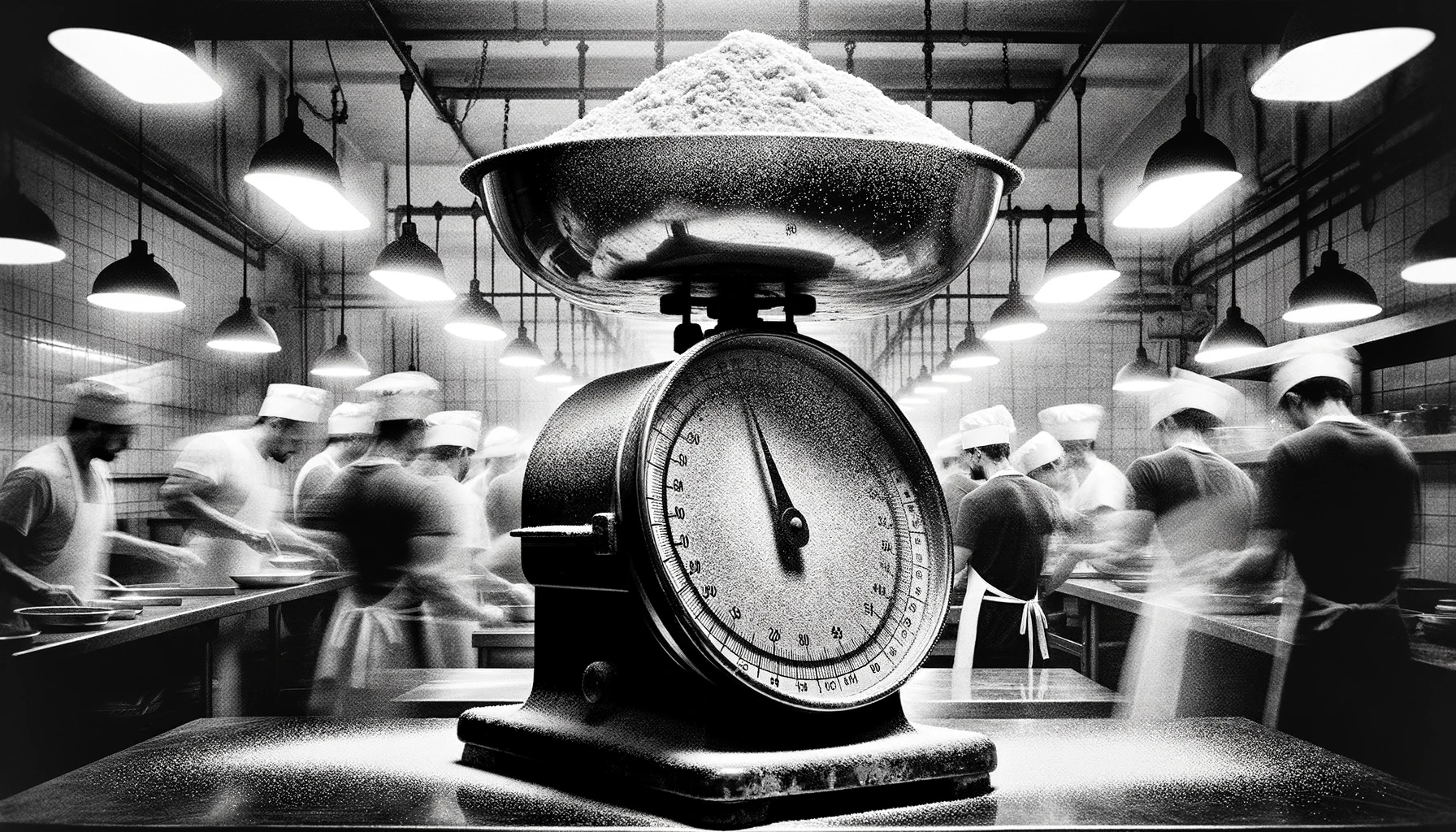Smart system solutions: Elevating mass balance in the food industry
In the world of food production, mastering mass balance – the art of aligning inputs with outputs – is a fundamental yet complex task. Today, smart system solutions are not just enhancing this practice; they are essential tools for bringing practicality and efficiency to these intricate processes.

Revolutionizing Mass Balance with Technology
The integration of technology in mass balance isn’t just about high-end innovation; it’s about practical solutions to everyday challenges. Automation and sophisticated software systems are now commonplace in food processing plants, offering tangible benefits. These systems meticulously track and manage resources, from water and energy to raw materials, leading to measurable improvements in waste reduction and output efficiency.
Smart sensors and IoT devices are the workhorses in this scenario, providing real-time data that streamline production processes. This evolution in mass balance is a step towards more resourceful and responsible use of materials, translating into direct cost savings and improved sustainability practices.
Sustainability and Efficiency through Tech-Driven Mass Balance
Let’s talk green. In the food industry, ‘green’ is all about sustainability, and here’s where tech steps in like a superhero. We’re seeing a wave of technologies that are making a real dent in how we manage resources in food production.
Picture this: smart systems that monitor every ounce of water and kilowatt of energy used. It’s not sci-fi anymore; it’s happening right now. These systems aren’t just about tracking; they’re about optimizing. They can predict, adjust, and save in ways we could only dream of a decade ago.
Consider water recycling in food processing: advanced filtration technologies now make it possible to reuse water effectively, reducing both environmental impact and operational costs. Similarly, smart energy management systems are cutting down on power usage, demonstrating that environmental stewardship can go hand-in-hand with economic efficiency.
The Impact of AI and Big Data
Now, let’s dive into the brainy side of things – AI and Big Data. These aren’t just buzzwords; they are practical tools reshaping the industry’s approach to mass balance. AI systems are aiding in everything from predicting crop yields to optimizing supply chains, while Big Data helps in making sense of the vast amounts of information generated in food production. These technologies lead to better resource allocation and reduced waste, ensuring a more balanced and cost-effective operation.
The Future of Mass Balance in Food Tech
As we look to the future of mass balance in food technology, the potential for advancement and innovation seems boundless. The next frontier involves not just refining current systems, but also exploring entirely new ways technology can contribute to mass balance in food production.
1. Blockchain for Enhanced Traceability: Blockchain technology is poised to play a significant role in the future of food tech. By providing a secure and unalterable record of every transaction and movement of resources, blockchain can offer unprecedented traceability in the supply chain. This feature is crucial for ensuring the integrity of mass balance calculations and for verifying the sustainability credentials of food products.
2. Nanotechnology in Resource Management: Nanotechnology could revolutionize how resources are used and tracked in food production. For instance, nano-sensors embedded in packaging materials could provide real-time data on food freshness, storage conditions, and even detect potential contamination. This level of detail will enable more precise adjustments in mass balance, reducing waste and improving product quality.
3. Predictive Analytics and Machine Learning: The future will see an even greater reliance on predictive analytics. Machine learning algorithms will become more sophisticated, enabling them to predict shifts in supply and demand with greater accuracy. This predictive capacity will allow food producers to adjust their inputs more precisely, optimizing their mass balance in response to market trends and environmental factors.
4. Customization Through 3D Printing: 3D food printing technology holds the potential to revolutionize mass balance by allowing for precise control over ingredient quantities. This technology could lead to a new era of customized food production, where the exact amount of each ingredient can be used to meet specific dietary requirements or consumer preferences, thereby minimizing waste.
5. Integration of Internet of Things (IoT) with AI: The integration of IoT with AI will likely see a leap in smart automation in food production. Smart factories with AI-driven IoT devices could autonomously adjust production processes, optimize resource use in real-time, and significantly improve the efficiency and accuracy of mass balance.
New technologies create balance and sustainability
The evolution of smart system solutions in mass balance within the food industry is a testament to the power of technology in transforming traditional practices. As we look towards a future filled with blockchain, nanotechnology, advanced analytics, and AI-driven automation, it’s clear that these technologies will not only enhance current processes but also open up new avenues for efficiency, sustainability, and precision in food production. Embracing these innovations is crucial for any forward-thinking business in the food industry.
News. Insights. Thoughts.
Elvenite ranked as one of the best places to work in the IT industry in 2024
Elvenite ranked as one of the IT industry's Best Workplaces 2024 Elvenite has been named one of Sweden's Best IT Workplaces for 2024, a prestigious award from Great Place To Work®. Elvenite is ranked 15th out of 25, celebrating our outstanding workplace culture and...
When milk production flows steadily, year-round
Ensuring steady milk production all year round with AIDid you know that milk production fluctuates significantly throughout the year? While we, as consumers, buy milk at the same pace regardless of the season, dairies like Valio face major challenges. During the...
How we use word embeddings and AI: from seating arrangements to data analysis
How we use word embeddings and AI: from seating arrangements to data analysisCreating the perfect seating arrangement is a challenge we can all relate to, whether it’s a private party or a large corporate event. Should I seat Anna next to Henrik, or will she be...
MAKING THE FOOD INDUSTRY SMARTER.
Contact us
054 15 01 15
[email protected]
Elvenite AB
Tynäsgatan 10, 652 16 Karlstad.
Org no. 556729-7956
Follow us




